Before avocado toast and artisanal paninis took over our lunch menus, America had a deliciously different sandwich lineup. The 1950s were a golden age for hearty, no-fuss classics that packed flavor between every slice of bread. From diner favorites to home kitchen staples, these sandwiches defined a decade of comfort food—and the best part? They’re still just as tasty today. Whether you’re craving melty cheese, creamy chicken salad, or a crispy, golden-fried bite, this list of the 8 most popular sandwiches from the 1950s will take your taste buds on a delicious trip down memory lane. Let’s dig in!
1. Reuben Sandwich: The Deli Counter Champion
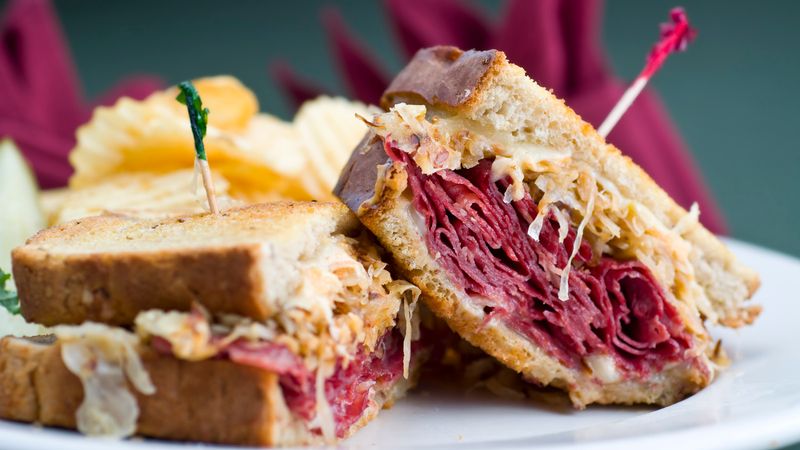
Piled high with thinly sliced corned beef, tangy sauerkraut, and melted Swiss cheese, the Reuben sandwich remains the undisputed king of deli counters nationwide. The magic happens when these ingredients meet Russian dressing between two slices of grilled rye bread.
The sandwich’s origins are hotly debated – some claim it was created by a grocer named Reuben Kulakofsky in Omaha during a poker game, while others credit Arnold Reuben of New York’s Reuben’s Restaurant. Regardless of its beginnings, this sandwich became a 1950s sensation.
The combination of warm, crispy bread and savory fillings creates the perfect balance of flavors and textures that has kept the Reuben relevant for generations. One bite explains why this sandwich has never gone out of style!
2. Club Sandwich: The Triple-Decker Delight
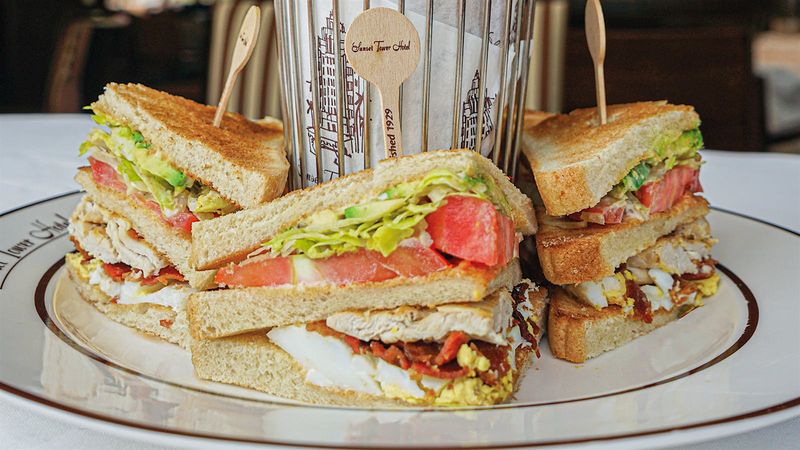
Nothing says “fancy lunch” quite like the impressive Club sandwich. This triple-decker masterpiece features three slices of toasted bread layered with turkey or chicken, crispy bacon, fresh lettuce, juicy tomato, and creamy mayonnaise, often secured with decorative toothpicks.
The Club sandwich emerged as a country club favorite in the early 20th century but reached peak popularity during the prosperous 1950s. Its elegant presentation made it a staple on hotel room service menus and upscale diners across America.
What makes this sandwich special is its satisfying height and the way each ingredient contributes a distinct texture and flavor. The Club sandwich represents the perfect balance of simplicity and sophistication – exactly what made 1950s food culture so memorable.
3. Monte Cristo: The Sweet-Savory Sensation
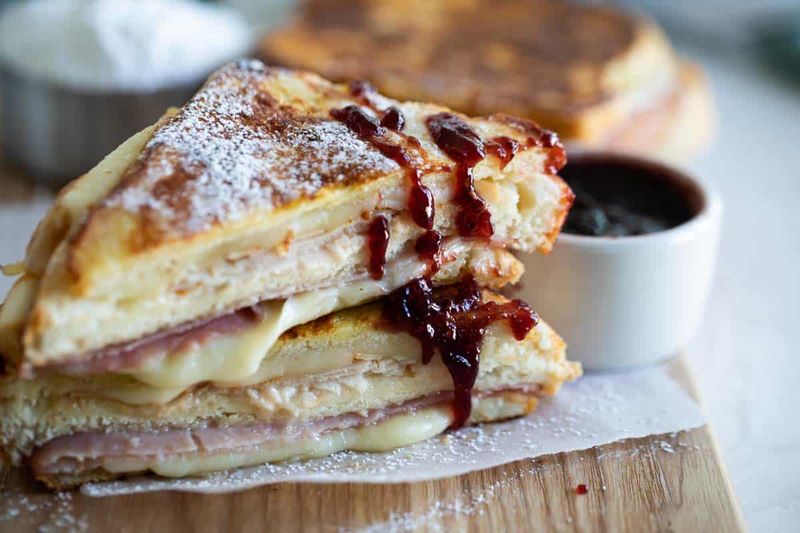
Imagine the French toast of your dreams transformed into a savory sandwich experience! The Monte Cristo combines sliced ham and Swiss cheese between two slices of bread, then gets dipped in egg batter and fried to golden perfection. The finishing touch? A light dusting of powdered sugar and a side of jam for dipping.
This unique creation gained traction in American diners during the 1950s as a variation of the French croque monsieur. Its popularity soared when Disneyland began serving it at their Blue Bayou Restaurant in the 1960s, cementing its status as a retro classic.
The unexpected combination of savory meat and cheese with sweet elements creates a taste experience that feels both indulgent and nostalgic. It’s breakfast, lunch, and dessert all wrapped up in one delicious package!
4. Welsh Rarebit: The Cheesy Open-Faced Wonder
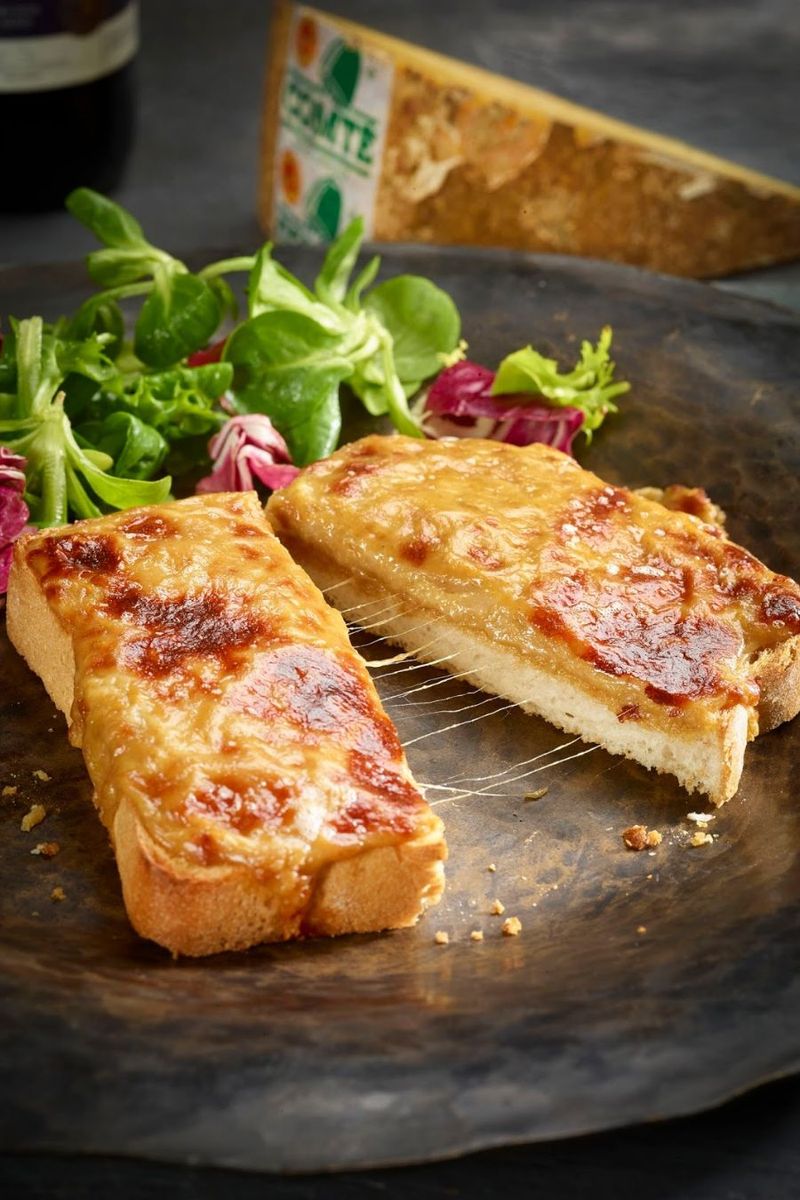
Welsh Rarebit might sound fancy, but it’s essentially the world’s most sophisticated cheese toast. This open-faced sandwich features thick-cut bread topped with a luxurious sauce made from sharp cheddar cheese, mustard, Worcestershire sauce, and sometimes a splash of dark beer for depth.
During the 1950s, Welsh Rarebit became a popular ladies’ lunch option and appeared frequently in women’s magazines as an elegant yet easy dish for entertaining. The sauce was often prepared tableside in fancy chafing dishes at dinner parties, adding theatrical flair.
The beauty of Welsh Rarebit lies in its simplicity – when the sauce is broiled until bubbling and golden, it transforms humble toast into something utterly irresistible. It’s proof that sometimes the simplest combinations create the most memorable flavors!
5. Souper Burger: Campbell’s Clever Creation
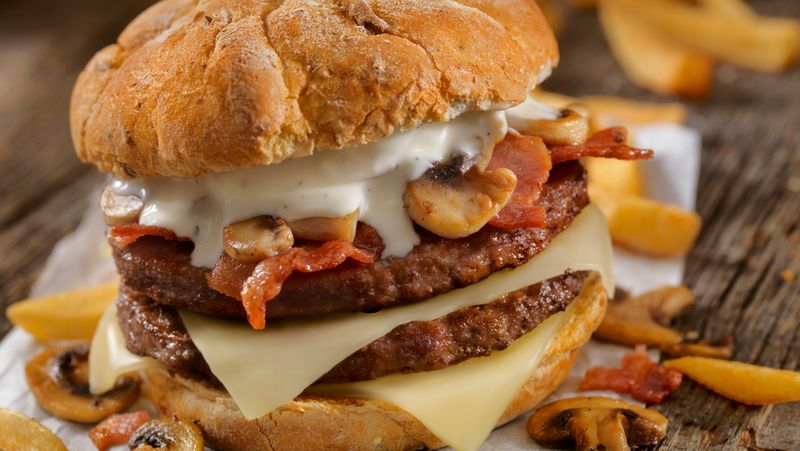
The Souper Burger represents 1950s convenience food innovation at its finest. Campbell’s Soup Company revolutionized home cooking by suggesting homemakers mix condensed cream of mushroom soup directly into ground beef patties, creating incredibly moist burgers with built-in flavor.
These patties were typically served on toasted buns with additional soup-based sauce spooned over the top. The concept perfectly captured the post-war enthusiasm for convenient, modern cooking using pantry staples and name-brand products.
Family cookbooks from the era are filled with variations – some added onion soup mix, others preferred cream of celery. The Souper Burger reminds us of a time when processed foods weren’t vilified but celebrated as scientific marvels that simplified women’s lives while still allowing them to serve homemade meals their families loved.
6. Breakfast Sandwich: The Diner Morning Staple
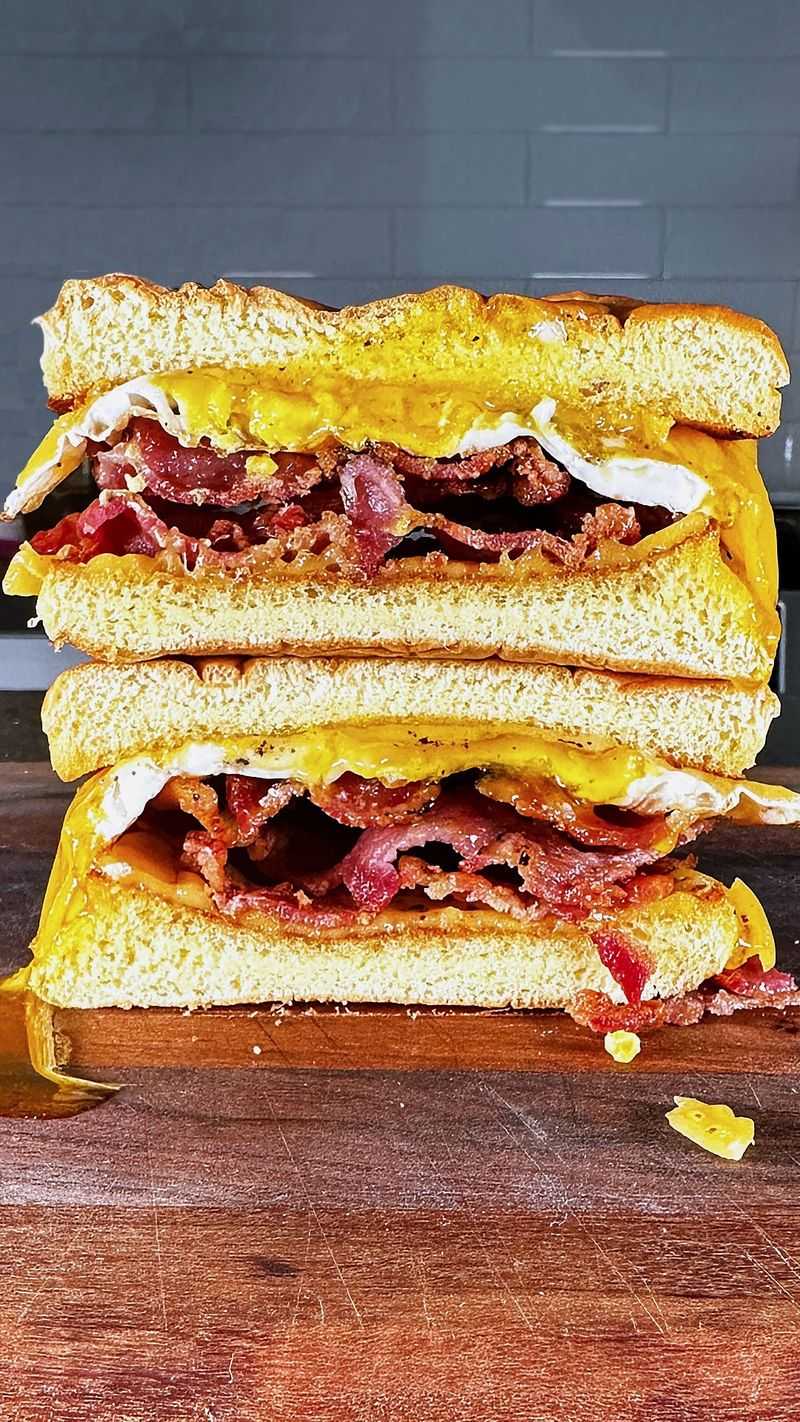
Long before fast food chains made breakfast sandwiches ubiquitous, 1950s diners were serving up these handheld morning meals to hungry workers. The classic version featured fried eggs with slightly runny yolks, American cheese, and either bacon or a sausage patty on toasted white bread or an English muffin.
These sandwiches emerged as Americans increasingly ate breakfast on the go during the post-war economic boom. They represented the perfect intersection of traditional breakfast foods in a convenient new format that suited busy lifestyles.
What made these early breakfast sandwiches special was their made-to-order quality – eggs cracked fresh on the griddle and bread toasted to order. The simplicity of these ingredients allowed the quality of each component to shine through, creating a satisfying start to any 1950s workday.
7. Chicken Salad Sandwich: The Ladies’ Luncheon Favorite
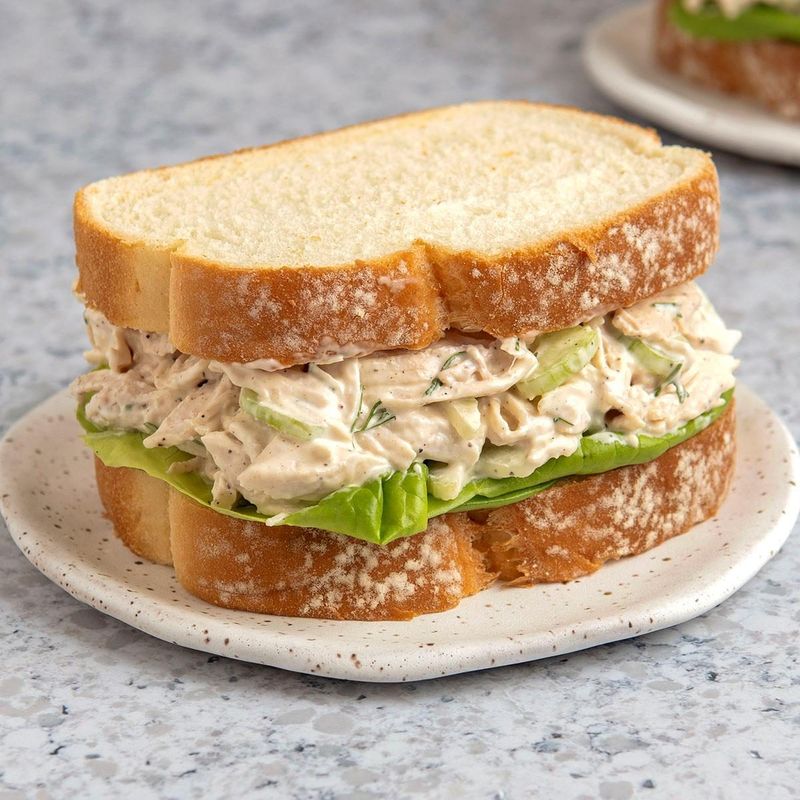
The chicken salad sandwich reached peak sophistication during the 1950s when homemakers elevated this simple concept with unexpected ingredients. Classic versions combined finely chopped chicken with mayonnaise, celery for crunch, and sometimes sweet additions like grapes or apples.
These sandwiches were standard fare at bridge clubs, garden parties, and department store tea rooms where women gathered for midday meals. Often served crustless and cut into dainty triangles or fingers, they represented femininity and refinement in sandwich form.
What made 1950s chicken salad unique was attention to presentation – served on soft white bread with lettuce leaves, sometimes garnished with olive slices or pimento for color. The sandwich symbolized the era’s appreciation for taking everyday foods and making them special through thoughtful preparation and artistic arrangement.
8. Friday Fish Sandwich: The Weekly Tradition
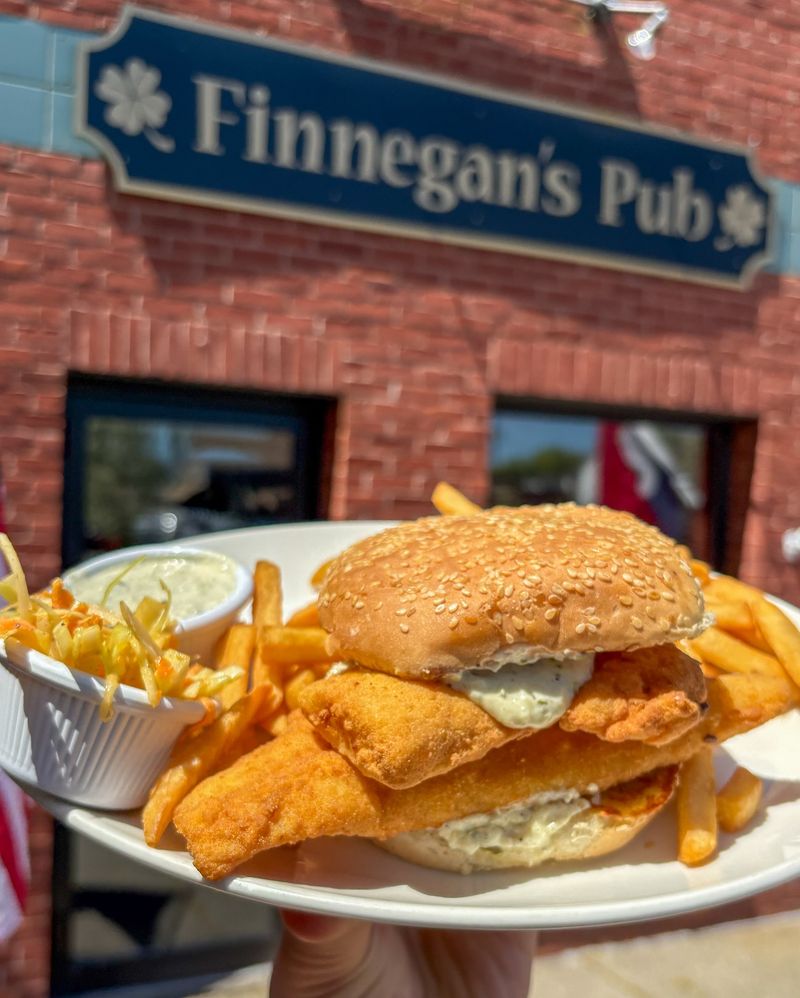
In 1950s America, Friday fish sandwiches became a cultural institution, particularly in Catholic households observing meat-free Fridays. These simple yet satisfying creations typically featured breaded white fish fillets on soft buns with tartar sauce and perhaps a slice of American cheese.
Restaurants and school cafeterias across the country adapted their Friday menus to accommodate this religious practice, making fish sandwiches a unifying American experience. The tradition was so ingrained that even McDonald’s introduced their Filet-O-Fish in 1962 specifically to address dropping Friday sales in Catholic neighborhoods.
The beauty of these sandwiches lay in their accessibility – they transformed potentially restrictive religious observance into something delicious that everyone could enjoy. For many Americans who grew up in the 1950s, the Friday fish sandwich represents not just a meal but cherished memories of family traditions and community identity.
Leave a comment